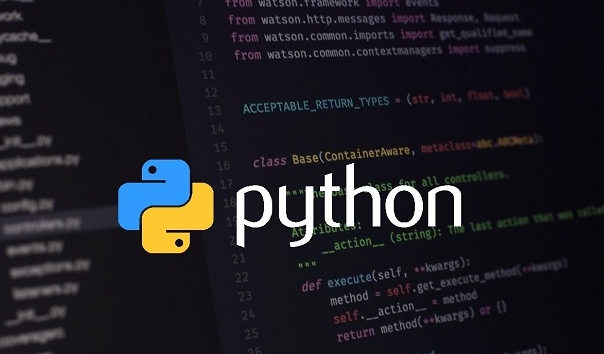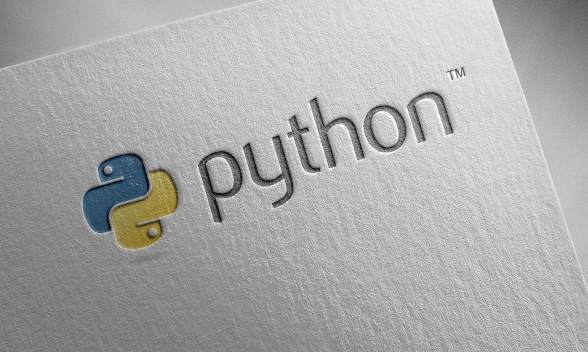 Backend Development
Backend Development
 Python Tutorial
Python Tutorial
 Utilizing List, Dictionary, and Set Comprehensions in Python
Utilizing List, Dictionary, and Set Comprehensions in Python
Utilizing List, Dictionary, and Set Comprehensions in Python
Jul 07, 2025 am 02:36 AMLists, dictionaries, and collection derivations in Python are efficient tools to simplify the creation of data structures. 1. The list comprehension uses a line of code to replace loops, and is used to quickly generate a list. For example, [x**2 for x in range(10)] creates a square sequence and supports conditional filtering, such as adding if statements to filter even squares; 2. The dictionary derivation formula processes key-value pairs at the same time, which is suitable for reconstructing or exchanging dictionary key values, such as {word: len(word) for word in words} to generate word length maps, and can limit words with length greater than 5 by conditions; 3. The set comprehension creates a set without duplicate elements, such as {char for char in 'hello world'} to extract unique characters, and supports conditional filtering of vowel letters. When using it, you should pay attention to the concise logic to avoid degradation of readability due to excessive nesting.

Sure, here's a practical explanation of using list, dictionary, and set comprehensions in Python:

List, dictionary, and set comprehensions are concise ways to create these data structures in Python. They let you write cleaner and more readable code by replacing loops with compact one-liners.

1. List Comprehensions – Simplify List Creation
List comprehensions allow you to generate lists quickly by applying an expression to each item in an iterable (like a list or range).
For example, if you want a list of squares for numbers from 0 to 9:

squares = [x**2 for x in range(10)]
This replaces the longer version using a for loop:
squares = []
for x in range(10):
squares.append(x**2)You can also add conditions:
Even_squares = [x**2 for x in range(10) if x % 2 == 0]
Tips:
- Use them when transforming or filtering data.
- Avoid overcomplicating with too many nested conditions.
2. Dictionary Comprehensions – Build Dictionaries Quickly
Dictionary comprehensives work similarly but include both keys and values. They're handy for transforming or swapping keys and values ??in existing dictionaries.
Say you have a list of words and their lengths:
words = ['apple', 'banana', 'cherry']
word_lengths = {word: len(word) for word in words}You can even filter:
long_words = {word: len(word) for word in words if len(word) > 5}One common use case is swapping keys and values:
original = {'a': 1, 'b': 2, 'c': 3}
swapped = {v: k for k, v in original.items()}Keep in mind:
- Make sure new keys are unique, or they'll overwrite each other.
- It's especially useful when restructuring data.
3. Set Comprehensions – Create Unique Collections Fast
Set comprehensions are like list comprehensions but return a set (ie, no duplicates). They're great for collecting unique items.
Example:
letters = {char for char in 'hello world'}This gives you all unique characters from the string.
You can also add conditions:
vowels = {char for char in 'hello world' if char in 'aeiou'}Useful scenarios:
- Removing duplicates from a sequence.
- Checking membership efficiently.
That's basically how you can make good use of comprehensions in daily Python coding. They're straightforward once you get the pattern down, and they save time without sacrificing clarity — as long as you don't go overboard with complex logic inside them.
The above is the detailed content of Utilizing List, Dictionary, and Set Comprehensions in Python. For more information, please follow other related articles on the PHP Chinese website!

Hot AI Tools

Undress AI Tool
Undress images for free

Undresser.AI Undress
AI-powered app for creating realistic nude photos

AI Clothes Remover
Online AI tool for removing clothes from photos.

Clothoff.io
AI clothes remover

Video Face Swap
Swap faces in any video effortlessly with our completely free AI face swap tool!

Hot Article

Hot Tools

Notepad++7.3.1
Easy-to-use and free code editor

SublimeText3 Chinese version
Chinese version, very easy to use

Zend Studio 13.0.1
Powerful PHP integrated development environment

Dreamweaver CS6
Visual web development tools

SublimeText3 Mac version
God-level code editing software (SublimeText3)
 How to handle API authentication in Python
Jul 13, 2025 am 02:22 AM
How to handle API authentication in Python
Jul 13, 2025 am 02:22 AM
The key to dealing with API authentication is to understand and use the authentication method correctly. 1. APIKey is the simplest authentication method, usually placed in the request header or URL parameters; 2. BasicAuth uses username and password for Base64 encoding transmission, which is suitable for internal systems; 3. OAuth2 needs to obtain the token first through client_id and client_secret, and then bring the BearerToken in the request header; 4. In order to deal with the token expiration, the token management class can be encapsulated and automatically refreshed the token; in short, selecting the appropriate method according to the document and safely storing the key information is the key.
 Explain Python assertions.
Jul 07, 2025 am 12:14 AM
Explain Python assertions.
Jul 07, 2025 am 12:14 AM
Assert is an assertion tool used in Python for debugging, and throws an AssertionError when the condition is not met. Its syntax is assert condition plus optional error information, which is suitable for internal logic verification such as parameter checking, status confirmation, etc., but cannot be used for security or user input checking, and should be used in conjunction with clear prompt information. It is only available for auxiliary debugging in the development stage rather than substituting exception handling.
 How to iterate over two lists at once Python
Jul 09, 2025 am 01:13 AM
How to iterate over two lists at once Python
Jul 09, 2025 am 01:13 AM
A common method to traverse two lists simultaneously in Python is to use the zip() function, which will pair multiple lists in order and be the shortest; if the list length is inconsistent, you can use itertools.zip_longest() to be the longest and fill in the missing values; combined with enumerate(), you can get the index at the same time. 1.zip() is concise and practical, suitable for paired data iteration; 2.zip_longest() can fill in the default value when dealing with inconsistent lengths; 3.enumerate(zip()) can obtain indexes during traversal, meeting the needs of a variety of complex scenarios.
 What are Python type hints?
Jul 07, 2025 am 02:55 AM
What are Python type hints?
Jul 07, 2025 am 02:55 AM
TypehintsinPythonsolvetheproblemofambiguityandpotentialbugsindynamicallytypedcodebyallowingdeveloperstospecifyexpectedtypes.Theyenhancereadability,enableearlybugdetection,andimprovetoolingsupport.Typehintsareaddedusingacolon(:)forvariablesandparamete
 What are python iterators?
Jul 08, 2025 am 02:56 AM
What are python iterators?
Jul 08, 2025 am 02:56 AM
InPython,iteratorsareobjectsthatallowloopingthroughcollectionsbyimplementing__iter__()and__next__().1)Iteratorsworkviatheiteratorprotocol,using__iter__()toreturntheiteratorand__next__()toretrievethenextitemuntilStopIterationisraised.2)Aniterable(like
 Python FastAPI tutorial
Jul 12, 2025 am 02:42 AM
Python FastAPI tutorial
Jul 12, 2025 am 02:42 AM
To create modern and efficient APIs using Python, FastAPI is recommended; it is based on standard Python type prompts and can automatically generate documents, with excellent performance. After installing FastAPI and ASGI server uvicorn, you can write interface code. By defining routes, writing processing functions, and returning data, APIs can be quickly built. FastAPI supports a variety of HTTP methods and provides automatically generated SwaggerUI and ReDoc documentation systems. URL parameters can be captured through path definition, while query parameters can be implemented by setting default values ??for function parameters. The rational use of Pydantic models can help improve development efficiency and accuracy.
 How to test an API with Python
Jul 12, 2025 am 02:47 AM
How to test an API with Python
Jul 12, 2025 am 02:47 AM
To test the API, you need to use Python's Requests library. The steps are to install the library, send requests, verify responses, set timeouts and retry. First, install the library through pipinstallrequests; then use requests.get() or requests.post() and other methods to send GET or POST requests; then check response.status_code and response.json() to ensure that the return result is in compliance with expectations; finally, add timeout parameters to set the timeout time, and combine the retrying library to achieve automatic retry to enhance stability.
 Python variable scope in functions
Jul 12, 2025 am 02:49 AM
Python variable scope in functions
Jul 12, 2025 am 02:49 AM
In Python, variables defined inside a function are local variables and are only valid within the function; externally defined are global variables that can be read anywhere. 1. Local variables are destroyed as the function is executed; 2. The function can access global variables but cannot be modified directly, so the global keyword is required; 3. If you want to modify outer function variables in nested functions, you need to use the nonlocal keyword; 4. Variables with the same name do not affect each other in different scopes; 5. Global must be declared when modifying global variables, otherwise UnboundLocalError error will be raised. Understanding these rules helps avoid bugs and write more reliable functions.





